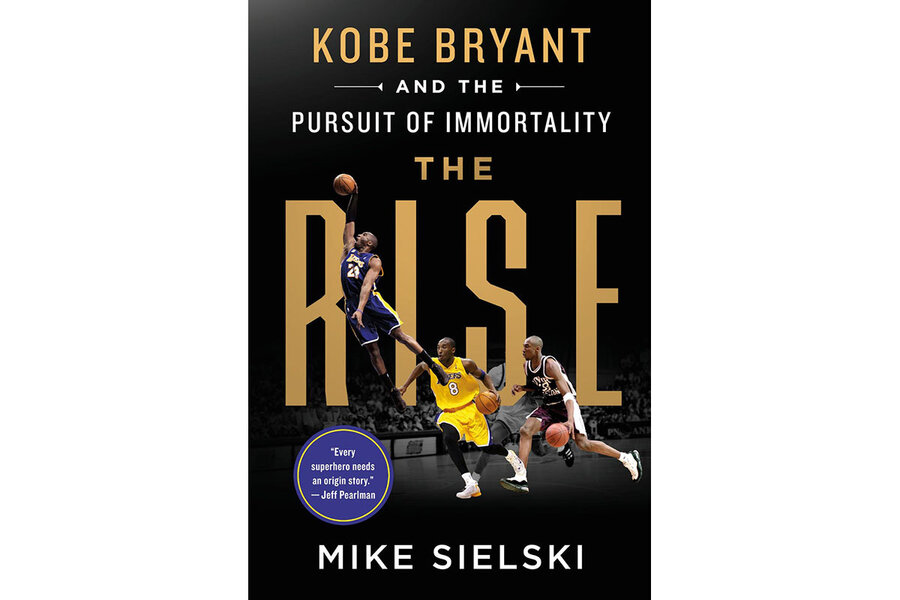How Kobe became Kobe: The story of a legend gone too soon
Behind every sports legend is the story of what it took to achieve that greatness. For the late Kobe Bryant, one of the NBA’s most renowned players, that story took place largely in a high school outside of Philadelphia. Sports columnist for The Philadelphia Inquirer Mike Sielski chronicles Bryant’s thrilling evolution from a young prodigy to a basketball star in his book, “The Rise: Kobe Bryant and the Pursuit of Immortality.”
Sielski looks back at the dedication that Bryant, who died in a helicopter crash on Jan. 26, 2020, exhibited even as a young person. He seemed destined to be an elite player. He was related to two basketball aces: His maternal uncle John Arthur “Chubby” Cox briefly played in the NBA, as did his father, Joe “Jellybean” Bryant, who bounced between teams in the 1970s and ’80s before ultimately taking his talents to Europe.
The Bryant family lived in Italy for eight years, moving there when Kobe was only 6 years old, and already he showed promise within his father’s sport. “Word was that God or genetics or a combination of those two powerful forces had bestowed a precious gift upon Joe Bryant’s only son” Sielski writes, and early on, that talent was recognized and nurtured.
The family moved back to the United States in the early ’90s when their son was in eighth grade, which proved to be a culture shock for him. Although he hadn’t forgotten how to speak English, he didn’t possess the all-too-important vocabulary of pop culture, having missed out on the American childhood of his peers. To them, he seemed foreign and his intensity about basketball was intimidating. Fortunately he didn’t face much racial discrimination at the largely white Lower Merion; his status as an athlete – and a remarkably good one – worked in his favor. Still, he simply wasn’t like everyone else.
That difference initially brought loneliness, but Bryant used the alone time to envision the future he wanted: first becoming a McDonald’s All-American player, a game reserved for the best high school basketball players, and then getting good enough to head straight to the NBA after high school. With these goals in mind, he used every free moment to practice. He studied videotapes of his basketball idols playing the game. He grabbed at any nugget of wisdom anyone was willing to offer in case it could teach him how to sharpen his skills. Everything revolved around basketball, and his laser focus quickly began to pay dividends as he improved at a staggering rate.
Having a player of his caliber was a benefit to Lower Merion. Bryant's star factor reinvigorated the sleepy sports culture at the high school and upped the bar for every other player on the team. With his prowess and leadership, Lower Merion won its first state championship in over 50 years in 1996. “He taught us how to win,” says coach Gregg Downer, who worked with Bryant from 1992-96. The school was good for Bryant, too, dedicating resources to his progress and providing much-needed structure, which helped him to succeed academically, athletically, and socially.
Bryant’s early story, respectfully and honestly told in “The Rise,” will be fascinating for fans of the late star, but it also proves to be an extraordinary case study in what’s possible for young people when they have the right blend of talent, opportunity, direction, and focus. Over the years, many have commented on Bryant’s privileged upbringing, referring mainly to his family’s wealth. In reality, as Sielski’s book demonstrates, the whole support system around him as a young man, including his tight-knit family and the attentive faculty and staff at Lower Merion, allowed him to flourish.
“The Rise” is a kind of time machine, permitting readers to see a teenaged Bryant play basketball when it wasn’t yet certain who he would become or what impact he would have. Sielski uses previously untouched tapes and transcripts from interviews with Bryant in the late ’90s and numerous new interviews with people who knew him, to tell a tale that is by turns a gripping sports story and a touching portrait of Bryant’s early life. Sielski has written a fitting tribute to a legend who was lost too soon.






